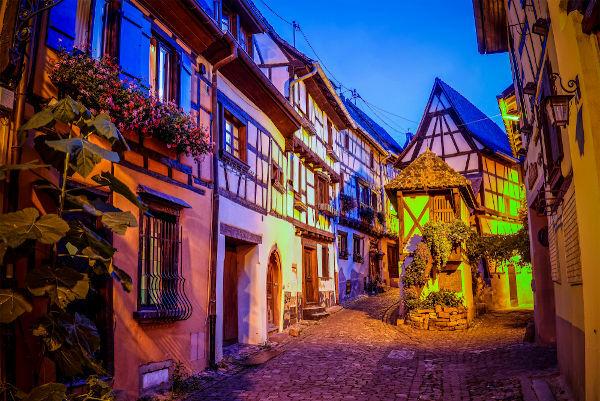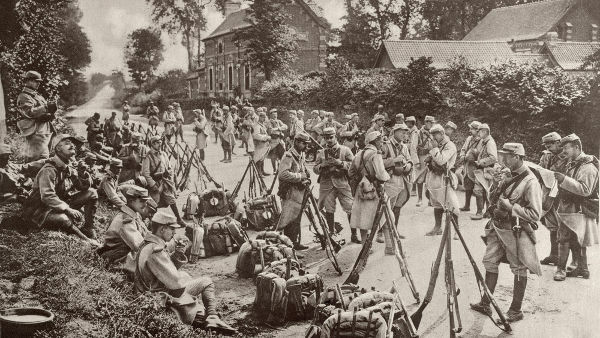THE conquest of aztecs was one of the chapters of conquest of spanish america carried out after the arrival of Europeans in that continent. The Aztecs were a Mesoamerican civilization that inhabited the region of present-day Mexico and kept it under the control of their emperor, Montezuma, a vast population and several territories.
Hernán Cortes's expedition and arrival in Mexico
The conquest of the Aztecs was a feat attributed to the Spanish Hernan Cortes. This process began in 1519 when Cortés left Cuba with about 500 men distributed in eleven vessels. Historian Marianne Mahn-Lot claims he got the money for the expedition on a loan.
Cortés' expedition headed for the Yucatán Peninsula and established itself on the Mexican coast where the Totonac city of Cempoala was located. Once installed, Cortes received numerous emissaries from the Aztec emperor Montezuma. Communication between Spaniards and Aztec emissaries was carried out by a native interpreter called Malinche, who spoke Nahuatl (language of the Aztecs) and had learned Spanish.
Initial contacts were peaceful and were made through the exchange of gifts between Spaniards and Aztecs. During the conversations, Cortes made clear his intentions to visit the Aztec capital, Tenochtitlan. However, the emperor refused to welcome the Spaniards into his city.
Cortes's march towards Tenochtitlan
Cortés's intention to go to Tenochtitlán began to be put into practice through diplomacy. Then Cortes managed to make an alliance with the people totonac, who was subject to the Aztecs and was obliged to pay very high taxes to Emperor Montezuma. If that didn't happen, the Aztecs would decimate the Totonac villages. Cortes then convinced the Totonacas to fight the Aztecs to get rid of their taxes.
Just before leaving for the Aztec capital, Cortés founded the city of Veracruz near Cempoala and left with some 450 Spaniards and thousands of Totonac warriors. Along the way, other local people, the Tlaxcaltecs, appeared as an obstacle. There was a battle between the warriors of Cortés and the Tlaxcaltecs, which resulted in the victory of the Spaniards. After the defeat, the Tlaxcaltecs were convinced to ally themselves with the Spaniards.
The defeat of the Tlaxcaltecs was a blow to Montezuma. They were a local tribe that had not been subjugated by the Aztecs, so they were independent. The Aztec emperor hoped that the Tlaxcaltecs would defeat the Spaniards. However, this did not happen, and Cortes ended up gaining a powerful ally.
The march of the Spaniards followed, and at Cholula there was a great massacre of the Aztecs. The call Cholula Massacre it was the result of an alleged disagreement between the Aztecs and the Spaniards in that city. The result of this was a large number of Aztecs killed by the Spaniards in the city's religious temple.
Do not stop now... There's more after the advertising ;)
After this event, Montezuma authorized the Spanish entry into the city of Tenochtitlán, on November 3, 1519. Spanish accounts portray the enchantment with the grandeur of the buildings in the Aztec capital. The city of Tenochtitlán at that time is believed to have a population of over 200,000.
Disagreements and war against the Aztecs
Initial contacts in Tenochtitlán were peaceful. However, that has changed. Cortes had to return to Veracruz, but first he left Montezuma as a hostage in the possession of some of his men who remained in Tenochtitlán. When he returned to the Aztec capital, Cortés found the city in a state of rebellion after disagreements between the remaining Spaniards and the Aztecs.
The rebellion forced the Spaniards to flee the city. The escape, however, was disastrous and half of Cortes's force was killed during this action. This episode was named by the Spaniards as La Noche Sad (The Sad Night). During the confusion of Tenochtitlán, Emperor Montezuma died after being stoned to the skull.
After fleeing, Cortes resumed preparations to regroup the forces for the conquest of Tenochtitlán. The siege of the city was carried out by numerous boats built by the Spanish, since it was on an island located in the middle of Lake Texcoco. The Aztec capital was weakened by an outbreak of smallpox and was conquered after fierce fighting.
With the fall of the capital, the other Aztec cities were progressively dominated by the Spaniards. Cortes was appointed by the Spanish king, Carlos V, as viceroy of the New Spain.
Causes of Spanish Victory
The Aztecs were an extremely advanced civilization with a complex social organization. The victory of the Spaniards was seen with surprise as, in terms of numbers, the Spanish force was much smaller than the Aztec. However, historians have attributed three reasons that help to understand how the victory of the Spaniards was built:
Superiorityarmament: the Spaniards had much superior armaments compared to the natives. The highlight goes to the cannons, the crossbows (also known as the crossbow) and the horse (there were no horses in America);
Illnessescontagious: the natives' contact with Spanish brought the natives a series of diseases for which they did not have antibodies. Smallpox, in particular, was the deadliest and decimated entire indigenous populations in various parts of America;
alliances: Cortes' policy of allying himself with other indigenous peoples who were enemies of the Aztecs was very effective, as it strengthened their ranks of combatants and allowed him to know the enemy and the region.
By Daniel Neves
Graduated in History
Would you like to reference this text in a school or academic work? Look:
SILVA, Daniel Neves. "Hernán Cortés and the conquest of the Aztecs"; Brazil School. Available in: https://brasilescola.uol.com.br/historiag/hernan-cortes-conquista-dos-astecas.htm. Accessed on June 27, 2021.


